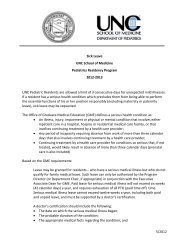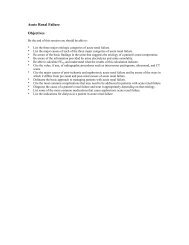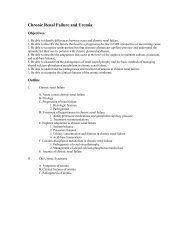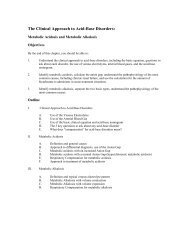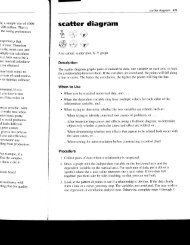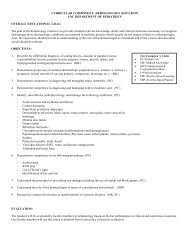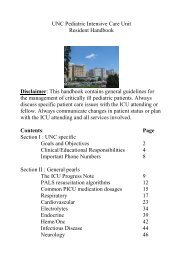Chapter 6
Chapter 6
Chapter 6
- No tags were found...
You also want an ePaper? Increase the reach of your titles
YUMPU automatically turns print PDFs into web optimized ePapers that Google loves.
lesting o [honge9Iseems exactly right after many hours of planning and analysis around the conferencetable may collapse under the stress of everyday realiry Remember, changeis a prediction. Rough prototypes o[ the change or some of its componentsshould be tested in PDSA cycles as soon as possible. Instead of redesigning theentire scheduling process over four months, Mike could have begun with a roughconcept of the new system. He then could have used multiple cycleg over thefour months to test and improye the components. In this case and in most others,using multiple cycies to increase one's knowledge of a change will acceleratethe rate of improvement.The use of multiple cycles allows knowledge to be increased as a change progressesfrom testing to implementation. It allows risk to be minimized. As degreeof belief that the change will be successful is increased, the scale of the test canbe increased.Suppose a change is developed in a manufacturing process. In the first cycle,people with knowledge of the subject might review it. Then, in the second cycle,it could be tried in a pilot plant. In the next cyc1e, the change might be testedon one line in the production area. The change might then be revised and testedin a fourth rycle. If the leaming from the frrst four cycles increases to a high levelthe degree of belief that the change will result in improvement, a1l or part of thechange could then be implemented full-scale in production. The collection andanalysis of data in each of these cycles is essential to the learning process.Based on the results o[ a test, a change or some part of a change could beimplemented as is, or it could be modified and retested, or it could be abandoned.Flgure 6.2 illustrates changes in degree ofbeliefas a team or individualuses cycles to go from the development of a change to testing and implementingit.Degree ofbeliefthat the i:change twill result in EimprovementUnsuccessfulproposed changedesigning ollrionners, ihey'henthe plon3 WeIe numerrtto improverted it. whatDevelopinga changeTesting a changecycle l, cycle 2, . . .lmplementingFigure 5.2, lloving hon Developing to lesting to lmplenenling o Chonge.




